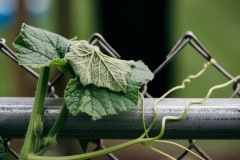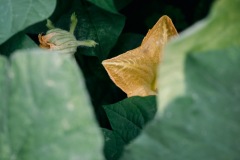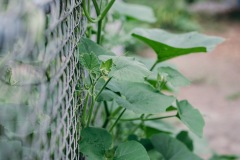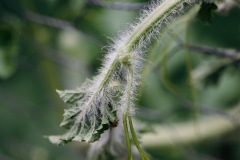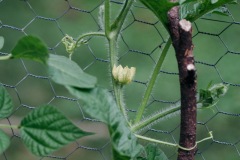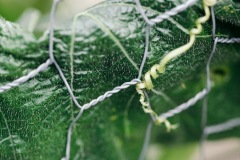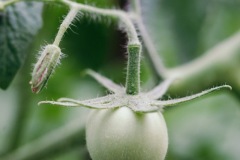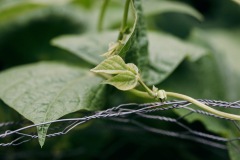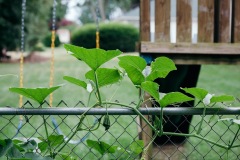Grow
There’s too much death in our world right now. Here in my own country, 150,000 unexcusable, mostly preventable deaths.
Here in our yard, we’ve noticed a lot of life this summer: we have two new skunks roaming our bush edge, a couple of aggressive squirrels that eat our bird seed, and now a gangbuster garden.
My garden memories go as far back as my memory goes: digging potatoes with my grandpa as a toddler, eating fresh green beans my grandma would cook southern-style. As soon as I had a home of my own, I planted a small garden in the back lot.
When we moved, this house had three years of not-great gardens. For one, the neighbors’ mulberry tree shaded the plot too much. And for two, maybe the weather? It’s hard to say.
But this year, it’s the biggest, healthiest garden I’ve ever had. It’s so big, it’s creeping into the neighbors’ yard. I told them whatever grows on their side of the fence, they can keep.
So I grabbed the macro lens and captured the texture and tendrils of this banner-year garden – the fuzzy stems, the searching vines, and the green and light-thirsty leaves.
Growing a garden has its benefits, of course. It’s good to get your hands dirty. It’s great to eat healthily. And the convenience factor – it’s so great to pick fresh lettuce and make a salad for lunch.
Along with cider, the garden has been my escape from the pandemic. Growing a garden is mostly a passive activity. You just let the water and sunshine do their thing. But I do wander out back to check on its progress, make sure the bugs aren’t eating all the greens, and picking whatever is ripe and ready.
My other hope is that, someday, the kids will remember eating fresh veggies from the garden – much like I did as a kid – and then want to grow their own.
It’s not much, but as the plague and politics and craziness gets worse, it’s good to grow something for a change.
